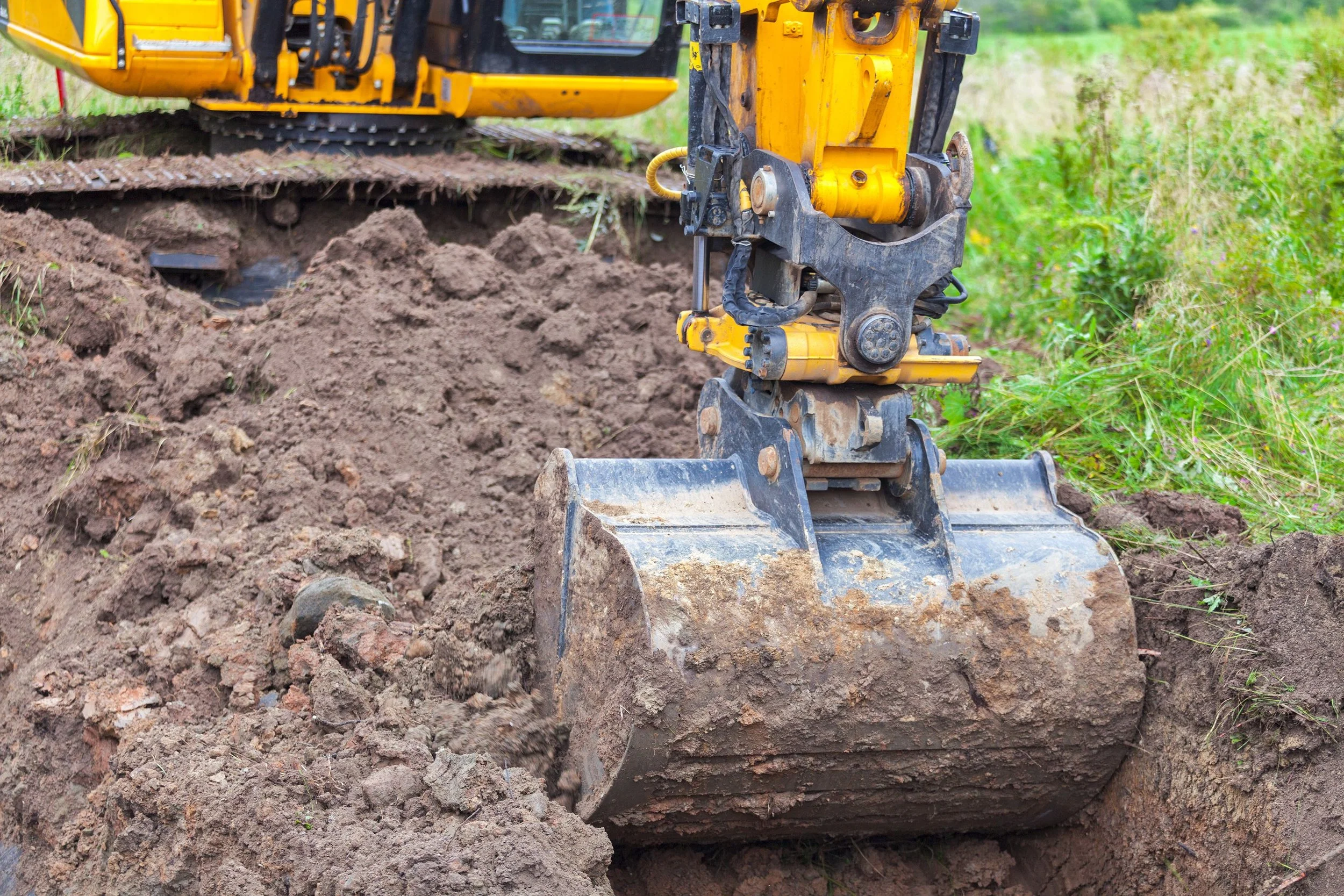by Shane Sody
An international golf course designer and LIV Golf supporter has sounded an alarm about the prospect of losing thousands of trees from the picturesque North Adelaide golf courses in your Park Lands.
Peter Dalkeith Scott was a golf course and landscape architect for Olazabal Design from 2003 to 2023. The company, led by former champion golfer Jose Maria Olazabal won the title of World Golf Course Designer of the year in 2020.
Mr Scott is now the CEO of his own development company, based in Dubai in the United Arab Emirates, and consulting around the world.
From left: Peter Dalkeith Scott, James Skaines of PNC architects in Dubai, and Jose Maria Olazabal at the Abu Dhabi Golf Course in January 2018.
Mr Scott still spends part of his time in Adelaide where he and his family live at Mawson Lakes. He fondly recalls walking many times through the Open Green Public North Adelaide golf courses in Possum Park / Pirltawardli (Park 1 of your Adelaide Park Lands).
Mr Scott describes himself as a “global sustainable development leader” experienced in design and development of not only golf courses and resorts, but also other large engineering, procurement, and construction projects. He says he’s “passionate about creating world-class, financially successful development.”
He is keen to point out that he is not a critic of LIV Golf, nor the Premier’s chosen designer Greg Norman:
“To be clear, I am in favour of LIV Golf and Greg Norman Design. This is my opinion about the conversion of Possum Park’s Public parkland to, in reality, a privatized elite golf course development.”
He's warned that State Government plans to "re-develop" the golf courses in Possum Park into a "championship" level course would, by his calculations, require the destruction of around 60 percent of the Park's trees.
Peter Dalkeith Scott. Pic: supplied
APA has been advised that the area marked out below contains an estimated 9,000 trees.
If these two figures are correct (60% of 9,000) then it would mean more than 5,000 trees would be doomed across this area of about 86 hectares within your Park Lands:
Possum Park /Pirltawardli (Park 1) and John E Brown Park (Park 27A). Legislation passed by State Parliament on 26 June 2025 hands control of this entire area (and any other land that might be required) to “the Minister” for “the project” which the Minister will define. Carrying out “the project” requires NO consultation, other than for “Aboriginal heritage” which consultation was due to close on 31 July 2025.
I put the following seven questions to Mr Scott to better understand his concerns. His responses are in italics:
1) The State Government's legislation, the North Adelaide Public Golf Course Act 2025 - does not include any map or defined area of land that is to be subject to development. Rather the Act gives "the Minister" absolute powers to take any land he wants for "the project". What is your view about the scope of this power? Have you seen any parallel anywhere else in the world?
The Act’s broad delegation of power to the Minister—without defined boundaries or clear constraints—is highly unusual and raises significant concerns about accountability and transparency. Such sweeping powers are rare in democratic jurisdictions, particularly when concerning public parklands. Comparable examples might include controversial "special development zones" in some countries where governments bypass normal planning processes, but these are often criticized for lacking public oversight.
Losing trees and other biodiversity, large new buildings, new car parks, months each year erecting “temporary” stands and fences; all this, and more is on the table to turn a huge part of your northern Park Lands into a profit-generator.
2) What is the difference between the current two North Adelaide golf courses and the type of course that would be required to satisfy the requirements for a "championship" course for LIV golf and other major tournaments?
The existing North Adelaide courses are primarily “public, recreational” courses with shorter fairways, fewer hazards, and less stringent turf and infrastructure standards. A “championship-level course” (e.g., for LIV Golf) would require:
Longer fairways (7,000+ yards).
More bunkers, water hazards, and undulating greens.
High-spec soil, irrigation, drainage, turf and subsequent increased maintenance.
Spectator infrastructure (grandstands, hospitality areas, TV broadcast zones and cabling).
Enhanced maintenance facilities (irrigation, drainage, clubhouse upgrades).
A small section of the City of Adelaide’s Urban Tree Map, showing just some of the trees on the south golf course on Possum Park /Pirltawardli (Park 1). Zoom in on any part of this tree map here: https://experience.arcgis.com/experience/d5a32539f144401f946629fdfa2894a7/page/Trees-by-Species
Q3) APA has been advised by the Premier's head of major developments that the existing North Adelaide golf courses are home to some 9,000 trees. A preliminary assessment by a University student intern (based upon a previous 2018 proposed redevelopment) calculated that it was likely around 600 trees would have been lost if that 2018 suggested development had proceeded.
The Premier has told APA that the 2025 Greg Norman proposed redevelopment would allow "the vast majority" of trees in the Park Lands to be retained.
These two predictions are of course rather vague but they would nevertheless seem to be consistent. Losing 600 trees out of 9,000 would allow "the vast majority" (ie about 8,400) to be retained. But this is still far from reassuring. What is being missed here?
While losing "only" 600 trees (out of 9,000) may seem minor, the ecological impact and loss of trees will be far greater:
For championship-level tournaments (such as LIV Golf or PGA events), fairways are typically much wider than those found on public or recreational courses. Here’s how the North Adelaide courses would likely need to change:
Effect of Widened fairways - Preferred Fairway Widths for Tournament Golf Courses
Current North Adelaide Fairways (Public Courses)
Width: ~25–35 metres (varies, often tree-lined)
Design: Narrow, defined by mature trees, encouraging accuracy over power.
Playability: Suitable for amateurs but too tight for professional events.
Championship-Level Fairway Standards
PGA/LIV Tournament Minimum Width: 35–50+ metres on average, with some exceeding 60m on key holes.
Reason for Width:
Professional driving distances (300+ yard carries) require wider landing zones.
Spectator viewing areas need space alongside fairways
Hazard placement (bunkers, water) requires strategic spacing.
Examples for Comparison:
Augusta National (Masters): Some fairways 40–60m wide.
St Andrews (The Open): Up to 50m+ in parts, but strategic angles matter more than pure width.
PGA Tour Courses: Average ~35–45m for modern designs.
Implications for North Adelaide Redevelopment
a. Tree Removal Necessary between all existing fairways.
Many existing fairways are flanked by trees, which would need to be cleared to achieve 40m+ widths.
Even if some trees are retained, large sections would have to go to allow for:
Player safety (errant drives at 180+ mph ball speeds).
Spectator movement during tournaments.
b. Strategic vs. "Bomb-and-Gouge" Design (hitting the ball from the tee as far as possible and playing aggressively from the rough with the emphasis on distance rather than accuracy)
Older courses (e.g., Royal Melbourne) use angles and hazards rather than pure width.
LIV Golf prefers "risk-reward" wide drives, meaning more open space is needed.
c. Potential Conflicts with Parkland Aesthetics
Widening fairways would thin out tree lines, altering the landscape from a wooded park to a more open, manicured golf zone.
Could lead to heat island effects (loss of shade) and reduced biodiversity.
Mature trees take decades to replace; loss of canopy affects wildlife and microclimates.
Soil disruption from earthworks could damage root systems of remaining trees.
Fragmentation of green space reduces biodiversity.
"Vast majority" is misleading—600 trees is still a major loss, and, I am sure, the actual number will be much higher with a championship redesign.




Q4) The Premier says that a redeveloped course would remain in public hands and would not be fenced except for purposes of major events or tournaments. Are there other examples elsewhere in the world of championship-level courses that are established and operated while allowing free access to the land, as a public Park?
Very few championship-level courses allow unrestricted public access. Some exceptions include:
St Andrews Links (Scotland) – Parts are open to walkers when not in play.
Chambers Bay (USA) – Public course with walking trails, but not during tournaments.
Royal Melbourne (Australia) – Limited public access, but heavily restricted during events.
Most elite courses are gated due to liability, maintenance, and revenue concerns. The Premier’s promise of "no permanent fencing" may conflict with the new elitecourse LIV Golf’s security and exclusivity demands.



Q5) You mentioned that insurers would not want to have the golf course open to casual non-golf use such as walkers. Yet the City Council does not seem to have any problem permitting this at present. If you are correct it would represent some tension with the Premier's promise that the redeveloped course would not be fenced except for major tournaments. What do you see as the problem here? Can a redeveloped championship course remain open and unfenced?
The City Council’s current allowance for the public works because:
Low player density reduces collision risks.
No high-speed golf balls (unlike a championship course with long drives).
No corporate/tournament liabilities.
The mature trees protect the public from much of the danger.
A redeveloped course would face:
Higher insurance premiums due to injury risks from professional-level drives.
Pressure from LIV/event organizers to restrict access for safety and exclusivity.
Potential legal battles if the public, on the course, are hit by stray balls.
More chance of vehicles travelling on surrounding roads being bombed by high speed errant shots
Can it remain unfenced? Only if heavily managed (e.g., timed access, designated paths), but this is rare for elite courses.
Image: Shutterstock
Q6) It's been suggested that one of the serious problems confronting a redevelopment of the North Adelaide golf courses is the existing grass which is kikuyu. It's been suggested that it would need to be entirely replaced requiring massive earthworks to remove all roots before replanting could occur. Is this a realistic issue?
Yes, replacing Kikuyu is a major hurdle:
Invasive roots require deep removal (up to 1m+ of soil stripping).
New turf (e.g., paspalum, zoysia or bermuda) need different soil pH, drainage, and maintenance.
Costly & disruptive – Would involve months of earthworks, affecting adjacent trees and parkland.
This isn’t just a "grass swap" but a complete reconstruction of the course’s earthworks and soil base to achieve “television recognition shaping and bunkering”
Q7. APA has made three suggestions so far of alternative locations where a new or existing golf course might be developed or redeveloped for LIV golf and/or other championship events.
If you had the choice, where would you suggest as an alternative venue?
Better alternatives could include:
Royal Adelaide (Seaton) – World-class course; could be upgraded for LIV.
New site in Mount Barker, Dry Creek, Mawson Lakes or outer Adelaide – Greenfield development avoids parkland destruction.
Conclusion: A Major Reshaping Needed
To meet LIV/PGA standards, the current courses would likely need:
30–50% more fairway width in key areas.
Significant tree removal (far beyond the "600 trees" estimate if full championship specs are enforced).
Redesigned holes to accommodate modern pro golf’s power game.
Would this align with the Premier’s promise of keeping the land "open and unfenced"? Unlikely—unless major compromises are made on tournament quality.
Why not just renovate both courses to championship quality, keeping tree lined fairways as is? This would make the course more attractive for “accuracy over distance” tournaments for ALL golfers.










